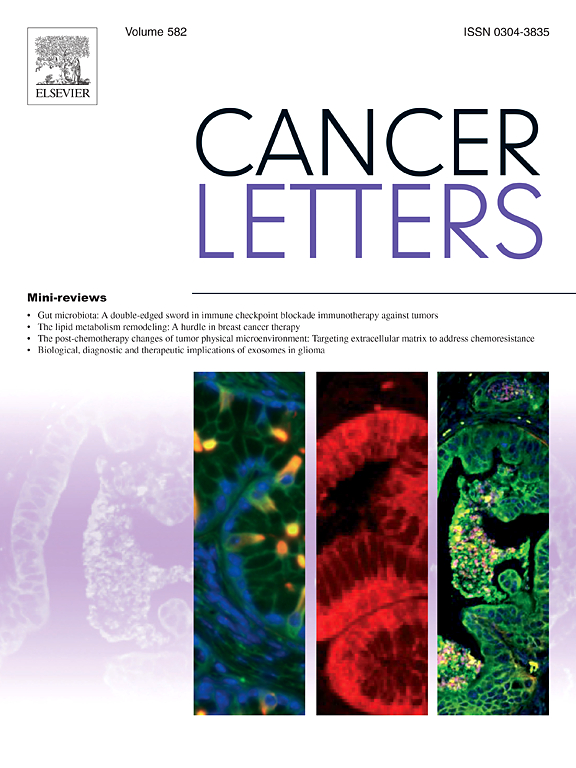Sulforaphane potentiates the efficacy of chemoradiotherapy in glioblastoma by selectively targeting thioredoxin reductase 1
IF 9.1
1区 医学
Q1 ONCOLOGY
引用次数: 0
Abstract
Chemoradiotherapy is a conventional treatment modality for patients with glioblastoma (GBM). However, the efficacy of this approach is significantly hindered by the development of therapeutic resistance. The thioredoxin system, which plays a crucial role in maintaining redox homeostasis, confers protection to cancer cells against apoptosis induced by chemoradiotherapy. Herein, we demonstrate that sulforaphane (SFN), an isothiocyanate phytochemical with anti-cancer effects, inhibits the activity of thioredoxin reductase 1 (TrxR1) through covalent conjugation with residues C59/64/497&U498. This inhibition of TrxR1 leads to the accumulation of reactive oxygen species (ROS), thereby enhancing chemoradiotherapy-induced apoptosis in GBM cells. Furthermore, SFN-induced ROS accumulation facilitates the polarization of M1-like macrophages, which synergistically sensitize GBM tumors to chemoradiotherapy. In conclusion, our study unveils that SFN has potential benefits in improving the effect of chemoradiotherapy and prognosis for GBM patients by targeting TrxR1.
萝卜硫素通过选择性靶向硫氧还蛋白还原酶1增强了胶质母细胞瘤放化疗的疗效。
放化疗是胶质母细胞瘤(GBM)患者的常规治疗方式。然而,这种方法的有效性受到治疗耐药性发展的显著阻碍。硫氧还蛋白系统在维持氧化还原稳态中起着至关重要的作用,可以保护癌细胞免受放化疗诱导的细胞凋亡。在此,我们证明了萝卜硫素(SFN)是一种具有抗癌作用的异硫氰酸植物化学物质,通过与残基c59 /64/497和u498的共价偶联抑制硫氧还蛋白还原酶1 (TrxR1)的活性。TrxR1的抑制导致活性氧(ROS)的积累,从而增强放化疗诱导的GBM细胞凋亡。此外,sfn诱导的ROS积累促进了m1样巨噬细胞的极化,从而协同提高GBM肿瘤对放化疗的敏感性。综上所述,我们的研究揭示了SFN靶向TrxR1在改善GBM患者放化疗效果和预后方面具有潜在的益处。
本文章由计算机程序翻译,如有差异,请以英文原文为准。
求助全文
约1分钟内获得全文
求助全文
来源期刊

Cancer letters
医学-肿瘤学
CiteScore
17.70
自引率
2.10%
发文量
427
审稿时长
15 days
期刊介绍:
Cancer Letters is a reputable international journal that serves as a platform for significant and original contributions in cancer research. The journal welcomes both full-length articles and Mini Reviews in the wide-ranging field of basic and translational oncology. Furthermore, it frequently presents Special Issues that shed light on current and topical areas in cancer research.
Cancer Letters is highly interested in various fundamental aspects that can cater to a diverse readership. These areas include the molecular genetics and cell biology of cancer, radiation biology, molecular pathology, hormones and cancer, viral oncology, metastasis, and chemoprevention. The journal actively focuses on experimental therapeutics, particularly the advancement of targeted therapies for personalized cancer medicine, such as metronomic chemotherapy.
By publishing groundbreaking research and promoting advancements in cancer treatments, Cancer Letters aims to actively contribute to the fight against cancer and the improvement of patient outcomes.
 求助内容:
求助内容: 应助结果提醒方式:
应助结果提醒方式:


